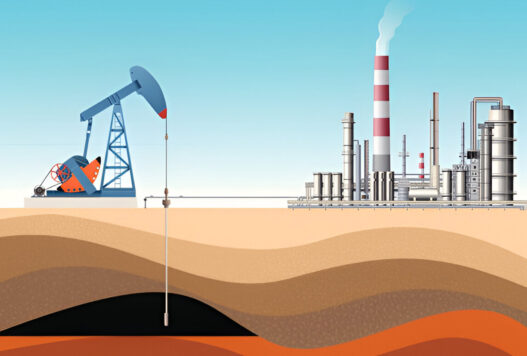The “PAHAL” scheme, also known as the Direct Benefit Transfer for LPG (DBTL) scheme, is a significant initiative by the Government of India to streamline the distribution of subsidies for domestic Liquefied Petroleum Gas (LPG) cylinders. This program aims to ensure that subsidies reach intended beneficiaries directly, reducing leakages and promoting transparency. This article provides an overview of the scheme’s objectives, processes, and achievements.
Overview of the PAHAL Scheme
The Government of India provides subsidies to consumers on the purchase of domestic LPG cylinders of 14.2 kg and 5 kg. The rate of the LPG subsidy is determined based on market conditions. The Direct Benefit Transfer of LPG Subsidy (DBTL) scheme was initially rolled out in 291 districts starting June 1, 2013, and later expanded nationwide.
Under the initial scheme, consumers were required to pay the market price for LPG refills, and the subsidy amount was then directly transferred to their bank accounts. However, after reviewing the challenges faced by consumers, the government relaunched a modified scheme on November 15, 2014, and named it PAHAL (Pratyaksh Hanstantrit Labh).
Key Features of the Revised Scheme
The revised PAHAL scheme includes the following key features:
-
Direct Transfer of Subsidy: The subsidy amount is directly transferred to the consumer’s bank account.
-
Aadhaar Optional: While the Aadhaar number was initially mandatory, customers without Aadhaar can now join the scheme by providing their bank account details to the LPG distributor.
-
Public Financial Management System (PFMS): Oil Marketing Companies (OMCs) use the PFMS to transfer subsidies to customer bank accounts.
-
Monthly Claims: OMCs claim subsidies from the government through the Petroleum Planning and Analysis Cell (PPAC) every month.
Steps Leading to Better Targeting of Subsidy
The PAHAL scheme has evolved through several stages to better target subsidies:
-
Capping the Number of Subsidized Cylinders: Initially, 6 subsidized cylinders per year were allowed, which was later revised to 9 and then 12 under PAHAL.
-
Detection of Multiple Connections: Measures were taken to identify and eliminate multiple connections under a single name or address.
-
Deduplication: Aadhaar and bank account details are used to deduplicate connections.
-
PAHAL: The scheme was relaunched as PAHAL, allowing direct transfer of subsidy to bank accounts.
-
GiveItUp Campaign: A campaign was launched to encourage voluntary surrender of LPG subsidies by those who do not need them.
-
Segregation Based on Income: A segregation based on income was introduced, with no subsidy for those with an income above 10 lakh.
Achievements of DBTL
The DBTL scheme has achieved several milestones:
-
It has been recognized by the Guinness Book of World Records as the world’s largest cash benefit program in terms of the number of households.
-
It has blocked 41 million fake/multiple/ghost consumers.
-
23.2 million consumers have voluntarily opted out of subsidized LPG.
-
Targeted benefits of Rs. 200 per cylinder to PMUY beneficiaries have been achieved at a negligible cost.
-
It has checked the diversion of domestic LPG for commercial use.
-
Subsidy on LPG is now restricted to intended beneficiaries only.
-
More than Rs. 9650 crore was credited to bank accounts for free refills during the COVID-19 pandemic under the Pradhan Mantri Gareeb Kalyan Package.
Authentications and Checks
The scheme incorporates several checks to ensure genuineness and prevent fraud:
-
Enrollment is based on submitted KYC (Know Your Customer) and Proof of Address (POA) documents.
-
Deduplication is performed based on name, address, Aadhaar, and bank account details.
-
Aadhaar seeding is done by LPG distributors in the LPG database.
-
For Aadhaar Transfer Compliant (ATC) customers, Aadhaar seeding is done at the bank end.
-
For Bank Transfer Compliant (BTC) customers, bank accounts are seeded at LPG distributorship.
LPG Refill Cycle Checks
The scheme also includes checks during the LPG refill cycle:
-
Customers receive three SMS updates (on refill booking, cash memo generation, and delivery confirmation).
-
Refill delivery is mandatory at the customer’s premises.
-
The counterfoil of the cash memo must be signed by the customer.
-
Subsidy is credited to the customer’s bank account after delivery confirmation.
-
A feedback link is provided after refill delivery, monitored by OMC officials.
-
A well-laid-down system for handling grievances is available through a call center and website.
Conclusion
The PAHAL scheme, or DBTL, has revolutionized the way LPG subsidies are distributed in India. By leveraging technology and direct benefit transfers, the scheme has significantly reduced leakages, improved efficiency, and ensured that subsidies reach the intended beneficiaries. The scheme has also been instrumental in promoting financial inclusion and empowering women by giving them control over their household energy resources.




